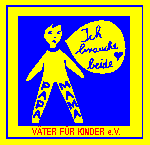
Christian T. Dum, Ph.D.**

The article treats a group of behavioral patterns which are frequently seen in connection with separation/divorce. They are commonly known by the name "Parental Alienation Syndrome" (PAS), introduced by R. Gardner. This name (for it's origin cf. Ch. III of the book by Gardner, 1992***) has caused a number of useless controversies regarding the question if this is indeed an empirically verified syndrome in the medical sense, i.e. a complex of symptoms characteristic of a certain disease. Instead, the title chosen here already describes quite well a process which can take many forms, but basically follows the same pattern in an alarming manner. This process has many similarities with a war, a civil war especially, because the warring parties were once united and the civilians, the children, to begin with, feel equal bonds to both parties, except for a normal ambivalence.
At least one of the parties, the "alienating parent", tries then consciously or unconsciously, by subtle means, but also through the employment of various "weapons", extending as far as false accusations of domestic violence and sexual child abuse, to alienate the children from the other party, the ''target parent". Even both parties may try this scheme, the strategic advantages are mostly fully on one side, at the side of the custodial parent. The other parent and the children, as a result of this development, frequently lose even all contact to each other. This not only happens through active obstruction of visitation (parenting time), but with PAS is the result of the psychodynamics in the children which is triggered by constant influence (brain washing). Fully alienated children have only negative feelings for the target parent, but believed to be based on their own cognition, and develop a singular relation with the alienating parent, on whose affection they are then even more dependent than before and on whom they are usually dependent in many additional ways. The children can even be robbed of both parents in this manner.
The parallels with a war, however, go further. Not only that the innocent civilian population, the children, suffers considerably, but the warring parties soon loose all perspective and rarely are able to terminate the war by themselves, before the total catastrophe, and to redefine their relation. In addition, the war is often fueled by various partisan "helpers". Real help can only be given based on a good understanding of the family system and by a close cooperation of parents, therapist, lawyers and the court. The intervention should begin as early as possible, in the still mild stage of the alienation. This is the actual actual quintessential point of the essay, which based on practical experience, describes in a quite pragmatic manner this mostly necessary intervention.
First, one is aquatinted with the motives for alienation. Then a detailed description follows, based on which one can recognize in time the various stages of alienation. The intervention measures must be adapted to these stages. An appropriate legal framework, which in the U.S.A mostly exists, is also required, especially to add emphasis beyond voluntary measures. Most U.S. States thus not only offer counseling and mediation, but it is predominantly mandatory, if minor children are involved in the separation/divorce, as a precondition for a divorce decree, or a ruling on contested custody/visitation matters. Courses are offered, often already explicitly including PAS, which should help parents to better understand the effects of divorce on children. Such courses, even therapy, can also be mandated in the case of massive obstruction of visitation and parental alienation.
The authors point out that individual therapy is helpful at best as a complimentary measure, but otherwise may even enhance the conflict. Rather, a joint therapy of all family members is required, even it may be difficult at first to assemble them around one table. In any case, the therapist must clearly understand family systems, PAS, and that children need both parents. The important role of a guardian ad litem and of the court is described in detail. Especially impressive is the description of the rules of conduct for attorneys in family matters, and particularly in PAS cases. It is strongly emphasized that all escalation hurts not only in the short term, but that parents and children have to live with the bitterness and other consequences, long after the attorneys are gone.
The last chapter describes in a very concise manner the use of "weapons", these being the various false allegations against the target parent, which by their nature shift the investigations to this parent and because of a potential harm to the child may allow to exclude visitation. Among them, allegations of sexual child abuse, and now in an increasing measure, of domestic violence, play a special role. Even in high conflict cases, these allegations must be taken seriously and clarified immediately. Sexuality especially easily induces intensive feelings, fear and panic. But also described is how easy it is to achieve a "tactical" advantage through false allegations of domestic violence, e.g. the (temporary) award of sole custody, mostly without a hearing of the accused and a check on the allegations.
The threat of moving away, or an actual "flight" is a weapon which at the same time is a clear red flag that the alienating parent will stop at nothing to achieve an exclusive relationship with the child.
The conclusions emphatically emphasize again the need for a close cooperation of judges, attorneys and therapists.
__________
* Ph.D.: philosophiae doctor; J.D.: juris
doctor
** We appreciate his permission for
publication
***
A new edition has been published in
March 1998